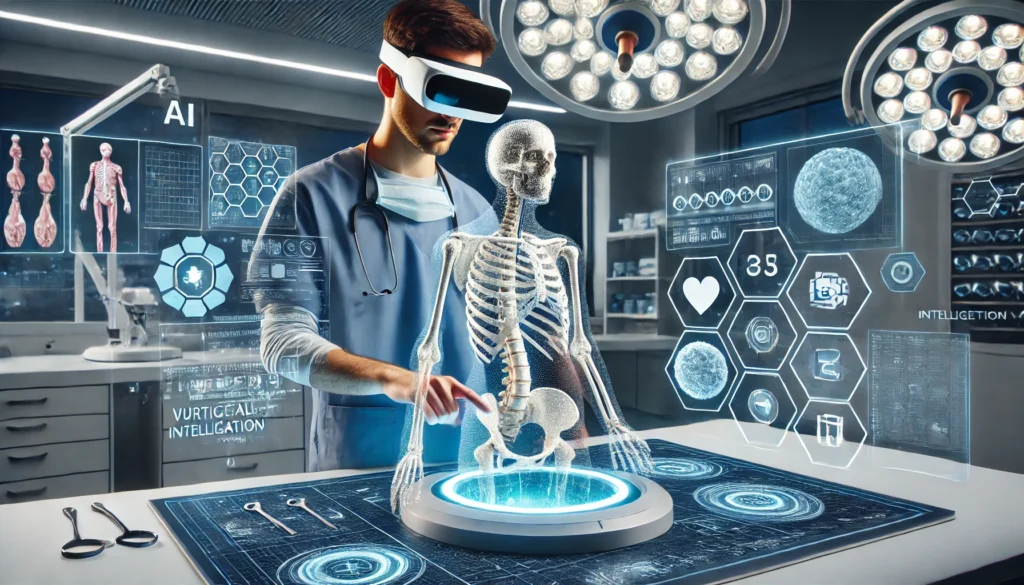
Virtual Reality (VR) is no longer confined to the world of gaming and entertainment. Businesses across industries are leveraging VR to transform training programs, making learning experiences more immersive, effective, and scalable. This blog explores how VR solutions for business training are reshaping workplace learning, the benefits they bring, and how organizations can integrate VR into their training strategies.
Why VR for Business Training?
Traditional training methods often rely on lectures, videos, and role-playing exercises. While these approaches can be effective, they frequently lack the engagement and realism needed to fully prepare employees for real-world challenges. VR bridges this gap by creating lifelike scenarios where employees can learn and practice in a risk-free environment.
Key benefits of VR for business training include:
- Enhanced Engagement: Immersive environments capture learners’ attention, improving retention and focus.
- Risk-Free Practice: Employees can practice complex or dangerous tasks without real-world consequences.
- Personalized Learning: VR allows learners to progress at their own pace, adapting to individual needs.
- Scalability: Once developed, VR programs can be deployed across multiple locations without additional costs.
Industries Benefiting from VR Training
1. Healthcare
Surgeons, nurses, and first responders use VR to simulate medical procedures and emergencies. These simulations help healthcare professionals build confidence and competence in high-pressure situations.
2. Manufacturing
VR training equips workers with the skills to operate heavy machinery and navigate safety protocols. By simulating factory environments, companies can reduce accidents and downtime.
3. Retail and Customer Service
Retail employees use VR to practice interacting with customers, handling complaints, and upselling products. This approach improves communication skills and boosts confidence.
4. Aviation
Pilots and flight crews undergo VR training for cockpit procedures, emergency protocols, and crew coordination. These simulations replicate real-world conditions with minimal risk.
5. Corporate Leadership and Soft Skills
VR training programs enhance leadership development by simulating team management, negotiation, and decision-making scenarios. These experiences build critical soft skills in a practical, hands-on way.
How VR Training Works
VR business training typically involves three components:
- Hardware: VR headsets like the Oculus Quest 3 or HTC Vive provide the immersive experience.
- Software: Customized VR applications tailor training modules to specific industries and roles.
- Analytics Tools: Advanced VR platforms collect data on performance, providing insights for continuous improvement.
Learners put on a VR headset, enter a virtual environment, and interact with simulated scenarios. For example:
- A construction worker might practice operating a crane.
- A manager might navigate a difficult conversation with a virtual employee.
- A medical student might perform a simulated surgery.
Top VR Solutions for Business Training
1. Strivr
Specializing in immersive learning, Strivr provides VR training solutions for large corporations, focusing on safety, compliance, and operational training.
2. Oculus for Business
Oculus for Business offers VR hardware and software tailored to enterprise needs, including collaboration tools and training modules.
3. Talespin
Talespin uses VR to create soft skills training programs, including conflict resolution, empathy building, and leadership development.
4. Virti
Virti designs VR and augmented reality (AR) training for industries like healthcare, engineering, and sales.
Key Benefits of VR Training for Businesses
1. Cost Efficiency
While initial setup costs can be significant, VR training eliminates ongoing expenses like travel, printed materials, and repeated instructor fees.
2. Improved Knowledge Retention
Studies show that VR training increases retention rates by 75% compared to traditional methods, thanks to its hands-on, immersive nature.
3. Safe Learning Environments
Employees can make mistakes and learn from them without risking safety, equipment, or customer satisfaction.
4. Measurable Results
VR platforms provide detailed metrics on employee performance, helping organizations identify areas for improvement.
Challenges to Consider
While VR offers numerous advantages, companies should be aware of potential challenges:
- High Initial Investment: Developing custom VR solutions can be costly.
- Technology Integration: Ensuring compatibility with existing systems may require additional resources.
- User Adoption: Employees unfamiliar with VR may need time to adapt.
To address these challenges, businesses should start with small pilot programs, involve employees in the design process, and work with experienced VR developers.
The Future of VR in Business Training
As VR technology advances, its applications in business training will continue to grow. Emerging trends include:
- AI-Powered Personalization: AI-driven VR environments will adapt in real-time to learners’ responses, providing tailored feedback.
- Multi-User Collaboration: Employees from different locations will train together in shared virtual environments.
- Wearable Tech Integration: Devices like haptic gloves and body suits will enhance realism, allowing users to “feel” interactions in VR.
Conclusion
Virtual reality is revolutionizing business training by offering immersive, engaging, and effective learning experiences. From healthcare to manufacturing, companies across industries are adopting VR to equip employees with the skills they need to excel. As the technology becomes more accessible, now is the time for organizations to explore how VR can elevate their training programs and drive better outcomes.
